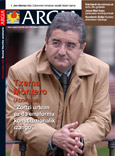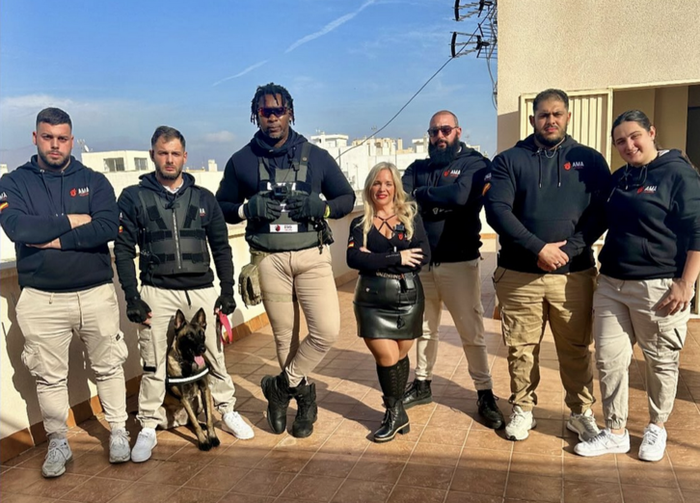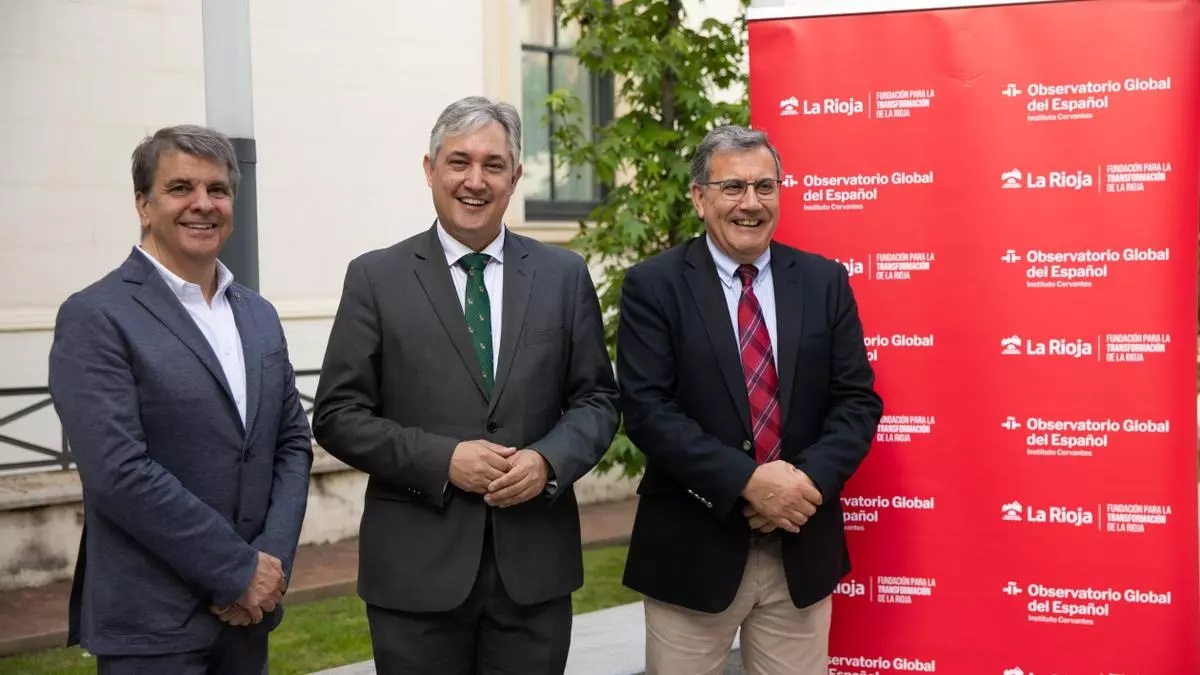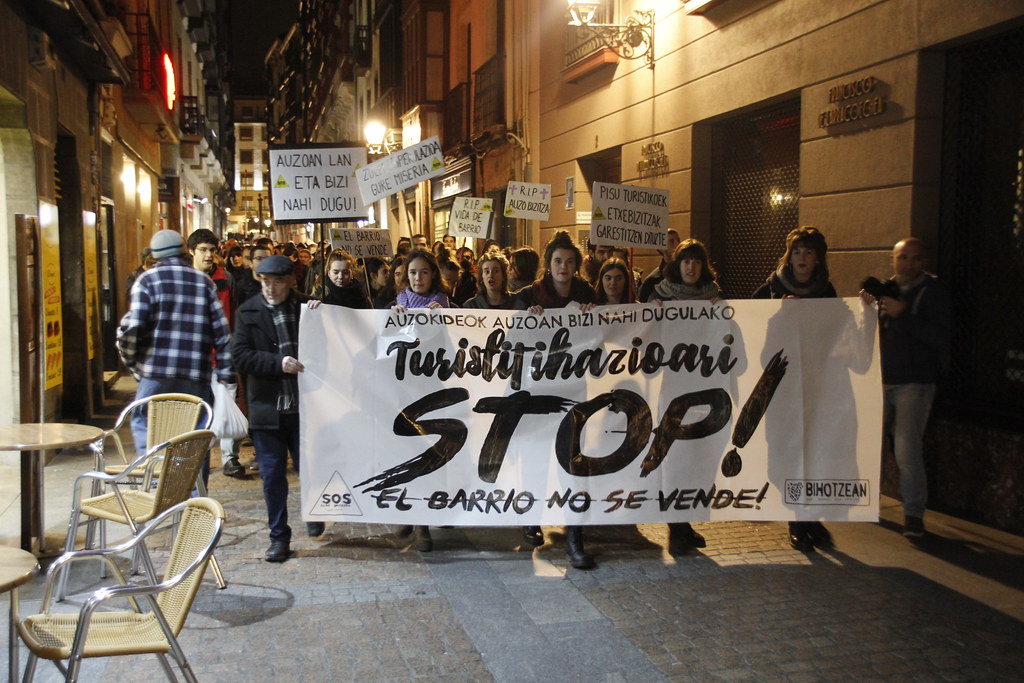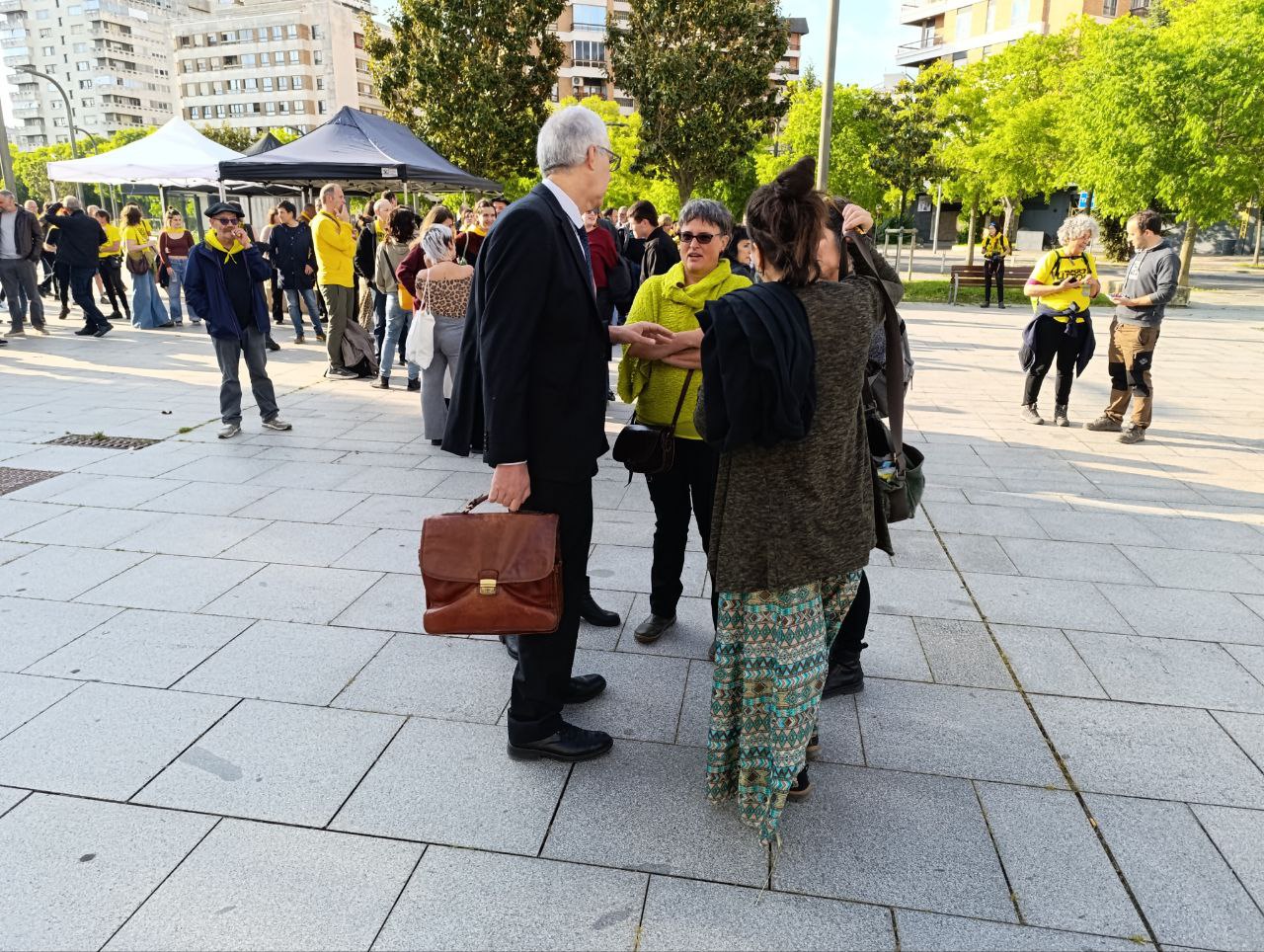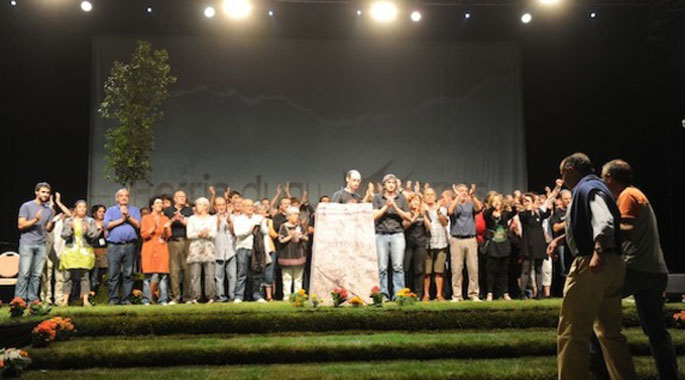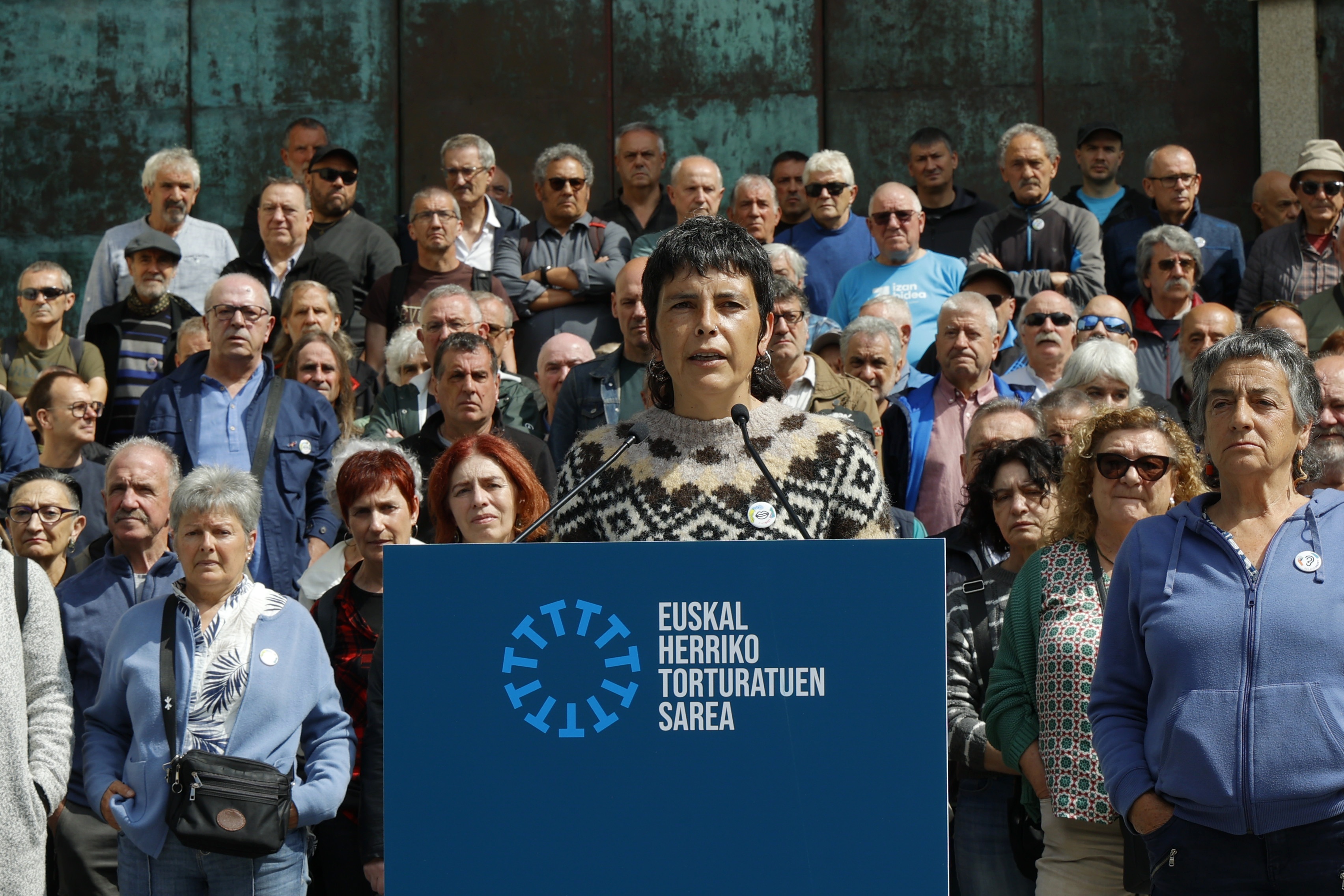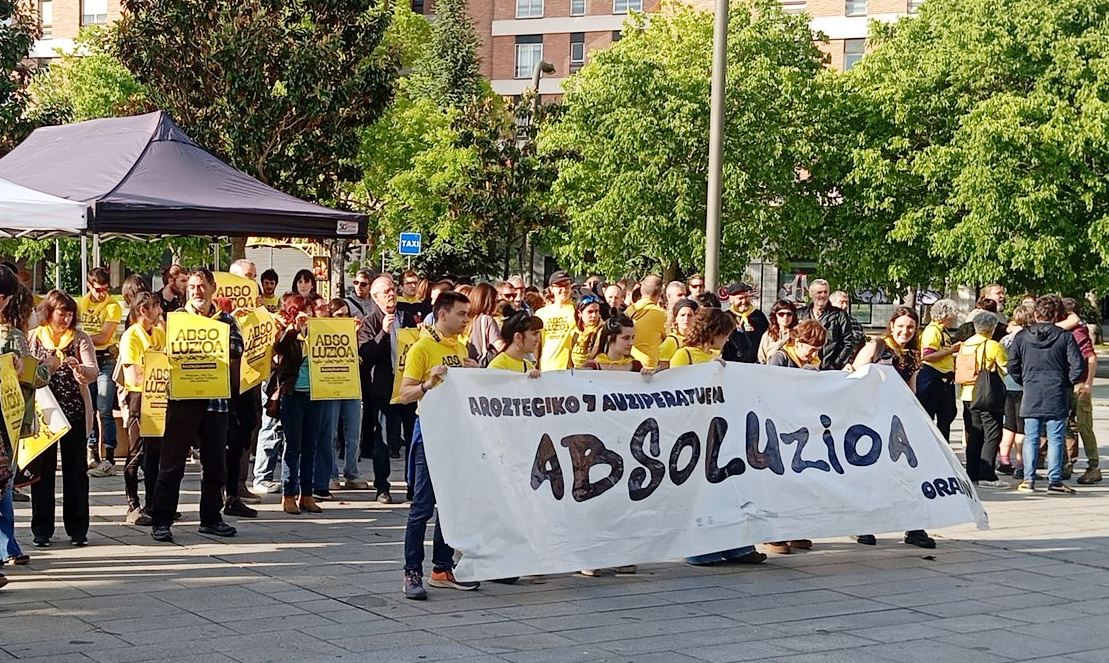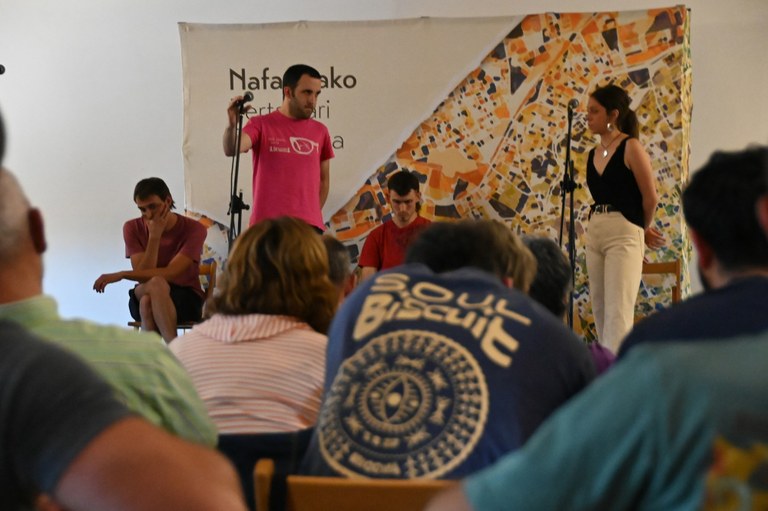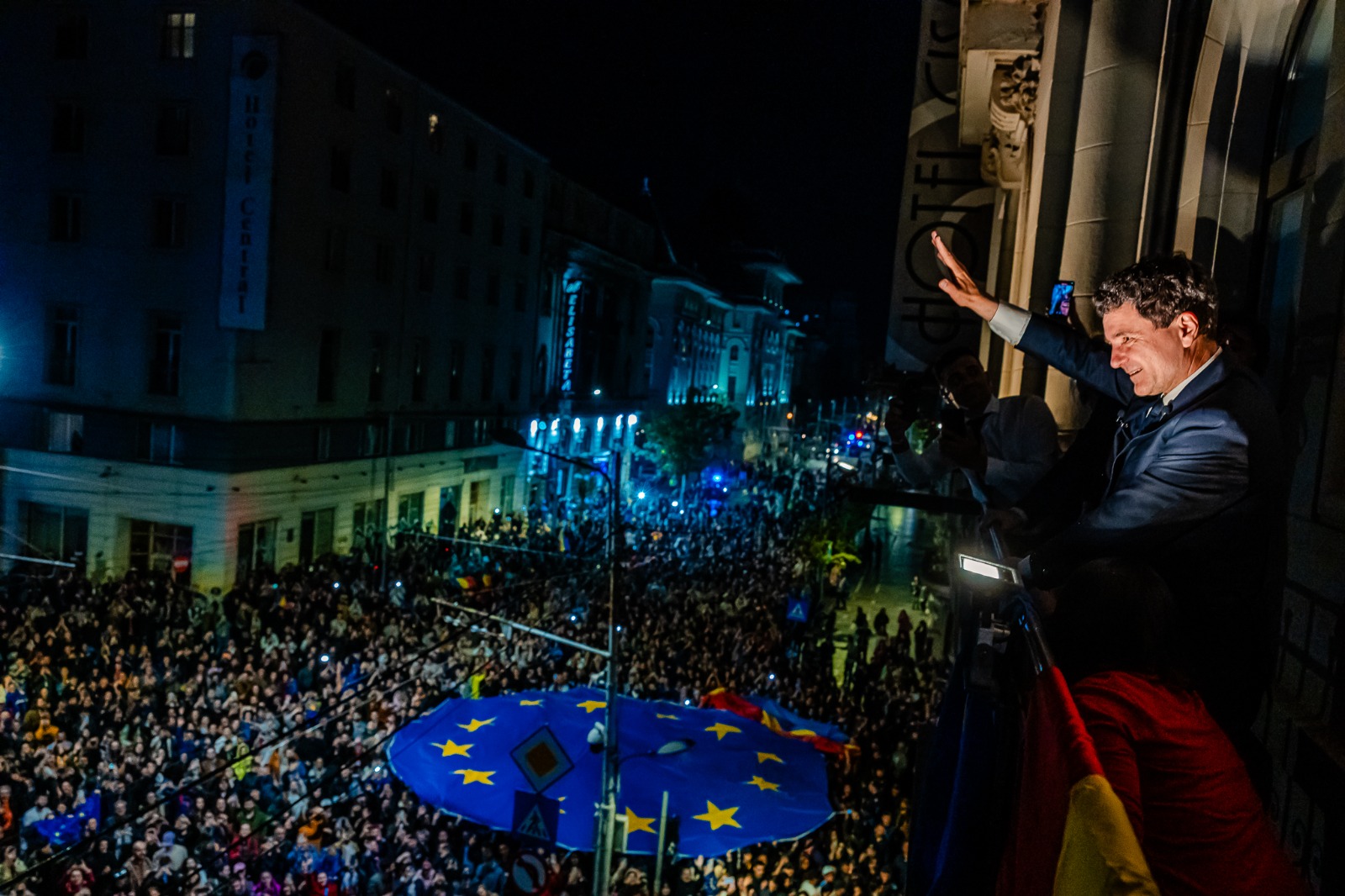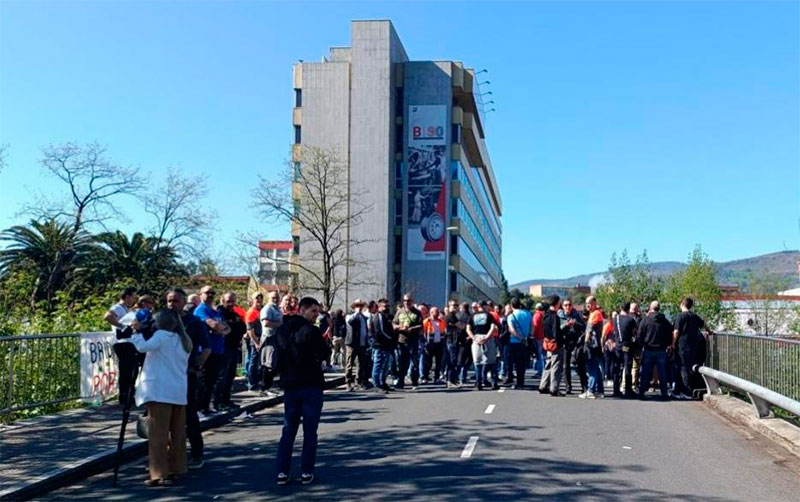Society
Environment
Politics
Economy
Culture
Basque language
Feminism
Education
International
Opinion
tuesday 20 may 2025
Automatically translated from Basque, translation may contain errors. More information here. 
Here, yes, the cresal!
- Turruna, calachoris, Basque... can be heard in Ondarro. It smells like salt and fish when you get there. The last town on the coast of Bizkaia has the charm of fishing villages and lots of things to tell, see and hear.
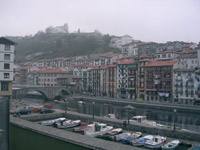
OndarroaAmaia Ugalde
When they hear the Turruna, the man from the land will not understand what is happening, but in the fishing village they know that the boat has entered the port and they will begin to unload the fish soon. If it’s a turrutia or a siren, the fishermen come with tuna. If they play twice, there’s a mackerel or a mackerel, and with the sounds of three turras, the anchovy will come in. If it sounds more, a fire or some misfortune has occurred. Listen to two, and we're approaching the harbor. The mackerel is being unloaded; it has been caught a lot today. We are located in Ondarroa, a fishing village in Bizkaia on the border with Gipuzkoa.
The Ondarroa has the fascination of medieval villages. The narrow steep streets and colourful balconies of the old town give it the charm of the fishing village. The old town has three streets: Gran Vía, Txomin Agirre Street or Superior Street – where the writer Txomin Agirre was born – and Calle Norte. Although there have been many fires in the history of Ondarroa, the structure of the old town is maintained in three streets. Among the oldest buildings are the impressive towers of Likona and the Casa Grande.
The most curious building in the village is the church. The church of Andra Mari was built on a rock and is of late Gothic style. It has many ornaments, the most curious of which are the “ghosts of the cork”. In the cork of the church, at the top, there are some sculptures. They represent medieval characters: knight, soldier, nurse, queen... According to the popular story, the little girl named Leokadi, without attending to the beliefs of the past, tried to take three turns to the promenade (correta) that surrounds the church. Before the last turn, however, he turned to stone. Now he's among the ghosts in the cork. They say that if the children make a mistake, the ghosts can take them and turn them into stones.Underneath a part of the corret where the poor
Leokadi turned to stone is the pilot’s field. Correta is a good place to enjoy the views of the village and also to watch ball matches. Those who watch the matches from there, however, have the reputation of always complaining. They are “pelotaxas de corre” for the population, and if you have a complaining day, don’t be surprised if some local tells you “don’t be pelotaxas de corre”. The border is strange. A few years ago, instead of numbers, they put special names on the marks on the wall: the first one
is Patala and the last one, Santoña Ameritza, for the ball that went too far.
We can leave the center and go to the beach of Arrierro in passion. To do this, the Artibai River must pass. “The Plai Bridge” has traditionally been the bridge to the beach. It is made of iron and extends in the middle to pass the boats. Around 1970 he had a cottage, and whoever wanted to go to the beach had to pay. One day, the cabin was burned down by someone from the village. They took out coplas and everything about the incident.
The Oceanfront Bridge, by Santiago Calatrava, is the most contrasting building in the town. It's older, as the name suggests, the Old Bridge. There was a bridge in this place since the 14th century, made of wood. The current one, made of stone, dates back to the 18th century, in the Romanesque style. It was renovated in the last century, almost completely destroyed by floods. Next to it is the impressive Old Brotherhood.
Continuing from Arrigorrí, there is the path to the beach of Saturraran in Mutriku. It is a nice walk to enjoy the sea. The three villages as well. One of the best places to see the village is the Mother of Antigua. We arrive at the top of the street, from where you can see the rocks of Saturrarán, the beaches and much of the coast. Without a doubt, Ondarroa is a town of people with crresses.
The Ondarroa has the fascination of medieval villages. The narrow steep streets and colourful balconies of the old town give it the charm of the fishing village. The old town has three streets: Gran Vía, Txomin Agirre Street or Superior Street – where the writer Txomin Agirre was born – and Calle Norte. Although there have been many fires in the history of Ondarroa, the structure of the old town is maintained in three streets. Among the oldest buildings are the impressive towers of Likona and the Casa Grande.
The most curious building in the village is the church. The church of Andra Mari was built on a rock and is of late Gothic style. It has many ornaments, the most curious of which are the “ghosts of the cork”. In the cork of the church, at the top, there are some sculptures. They represent medieval characters: knight, soldier, nurse, queen... According to the popular story, the little girl named Leokadi, without attending to the beliefs of the past, tried to take three turns to the promenade (correta) that surrounds the church. Before the last turn, however, he turned to stone. Now he's among the ghosts in the cork. They say that if the children make a mistake, the ghosts can take them and turn them into stones.Underneath a part of the corret where the poor
Leokadi turned to stone is the pilot’s field. Correta is a good place to enjoy the views of the village and also to watch ball matches. Those who watch the matches from there, however, have the reputation of always complaining. They are “pelotaxas de corre” for the population, and if you have a complaining day, don’t be surprised if some local tells you “don’t be pelotaxas de corre”. The border is strange. A few years ago, instead of numbers, they put special names on the marks on the wall: the first one
is Patala and the last one, Santoña Ameritza, for the ball that went too far.
Village of beautiful walks
We can leave the center and go to the beach of Arrierro in passion. To do this, the Artibai River must pass. “The Plai Bridge” has traditionally been the bridge to the beach. It is made of iron and extends in the middle to pass the boats. Around 1970 he had a cottage, and whoever wanted to go to the beach had to pay. One day, the cabin was burned down by someone from the village. They took out coplas and everything about the incident.
The Oceanfront Bridge, by Santiago Calatrava, is the most contrasting building in the town. It's older, as the name suggests, the Old Bridge. There was a bridge in this place since the 14th century, made of wood. The current one, made of stone, dates back to the 18th century, in the Romanesque style. It was renovated in the last century, almost completely destroyed by floods. Next to it is the impressive Old Brotherhood.
Continuing from Arrigorrí, there is the path to the beach of Saturraran in Mutriku. It is a nice walk to enjoy the sea. The three villages as well. One of the best places to see the village is the Mother of Antigua. We arrive at the top of the street, from where you can see the rocks of Saturrarán, the beaches and much of the coast. Without a doubt, Ondarroa is a town of people with crresses.
Most read
Using Matomo
#1
#2
Mikel Garcia Idiakez
#3
#4
Asunek
|
Goiuri Alberdi
|
Aintzira Oñederra
#5
Eneko Imaz Galparsoro
Newest
2025-05-20
Aiaraldea
AMA Desoccupa leaves Amurrio without completing the eviction, "thanks to the popular response"
The Air Force Strike Committee (SOS Aiaraldea) reported that the plane was taken back on Saturday by members of the de-occupation company.
2025-05-20
Garazi Basterretxea
By Pepe Mujica and Lucia Topolansky
“The two Basques want to whisper a poem to Pepe and Lucía”
Between January and May 2015, after finishing my studies at the age of 25, my friend Irati Astobieta and I toured Chile, Argentina and Uruguay as part of the Calabazan Wandering Project. Using the poetic tool of whispered poetry, we gave Basque poems from mouth to ear in the... [+]
2025-05-20
ARGIA
The Observatory refuses to participate in a series of conferences “aimed at promoting Spanish”
The Observatorio de Derechos Lingüísticas argues that the objective of the conference, which is to promote the Spanish language, and the normalization and revitalization of the Basque language, are contradicted. He informs the organizing entity Observatorio Global del Español... [+]
2025-05-20
Unai Lomana Uribezubia
The Spanish government has ordered Airbnb to remove ads for 65,935 tourist homes, including some of the...
The Department of Social Rights and Consumer Affairs of Spain asked the company to remove 65,935 housing ads from the website throughout the Spanish State, accusing them of non-compliance with the regulations. Airbnb filed an appeal, the Superior Court of Madrid has ruled in... [+]
2025-05-19
Xabier Letona Biteri
Chronicle of the Carpentry Trial (First Day)
The accusations have highlighted a name in the first session: Location of Garbiñe Elizegi
The morning woke up warm in Pamplona, and in front of the Palace of Justice of Navarra the warm was warm, the heat of solidarity. The Solidarity Committee of the Carpinteria, approached by Baztandi, had placed the tent in front of the court and dozens of people have expressed... [+]
2025-05-19
Unai Lomana Uribezubia
Six members of the fugitive collective testify before the National Court
The six members of the Basque Political Fugitives Collective testified by videoconference on Monday morning. The subpoenas indicated that the proceedings had been opened on the basis of the events of 2013. The summary is kept secret.
2025-05-19
Unai Lomana Uribezubia
The Network of Tortured People of the Basque Country calls for the abolition of evidence constructed through torture on the basis of Sorzabal’s sentence
"It is time to take public responsibility," said the Network of Tortured People of the Basque Country, after the National Court admitted that Iratxe Sorzabal was tortured by the Guardia Civil and was therefore acquitted. He asked the Basque Government to extend Law 12/2016 on... [+]
2025-05-19
ARGIA
Special follow-up to the carpentry trial
Throughout the week, a journalist from LUZ will be dedicated to reporting what happens inside the court, as well as following the extensive program organized abroad by the Solidarity Committee of the Carpinteria to demand the acquittal of the accused. You will find all the... [+]
2025-05-19
Bertsozale.eus
The qualifying sessions of the Bertsolari Championship of Navarra will be held on 23 and 30 May
The first session will be held in Pamplona on 23 May and the second of Jauntsarats on 30 May. There will be 12 contestants who did not compete in the previous tournament. Of these, six will qualify for the tournament that begins in October.
2025-05-19
Unai Lomana Uribezubia
Surprise in Romania: EU candidate wins presidential election
Bucharest Mayor Nicusor Dan defeated far-right candidate George Simion in the second round. Dan gets 55% of the votes, Simion gets 45%.However, the far right has grown in relation to the first lap. There have been elections steeped in the controversy of Russia's "intervention".
2025-05-19
Eneko Imaz Galparsoro
Israel’s total occupation of Gaza kills at least 150 Palestinians in a single day
Following its announcement in early May, the Israeli army has launched a plan to fully occupy Gaza and expel its Palestinians. The list has already begun to suffer the consequences of the offensive: in the last 24 hours, Israel has killed at least 150 Palestinians. The ceasefire... [+]
2025-05-19
ARGIA
Bridgestone’s regulatory dossier receives the dismissal of 232 workers from the Basauri factory
The regulatory dossier to be signed on Monday by CCOO, UGT and BuB will affect 420 workers of the Japanese tyre multinational Bridgestone in its factories in Basauri and Puente San Miguel, Cantabria. In a vote on Friday, 569 of the approximately 900 workers at the Basauri plant... [+]
2025-05-19
Unai Lomana Uribezubia
Two attacks on homeless people in Bilbao and Lekeitio
On Saturday night, a man set fire to a pavilion in Bilbao’s Puntas to attack some of the evicted people who live there. According to witnesses, the 33-year-old man set the curtains on fire after arguing with some of those present. On the other hand, last week in Lekeitio, the... [+]
2025-05-19
Eneko Imaz Galparsoro
Once again, controversy over Israel dominates the Eurovision Song Contest
The 72 artists who participated in the competition denounced last year’s edition as “the most politicized and unpleasant historical”, and this year has not been an exception either. Thanks to the online vote, the representative of Israel, Yuval Raphael, had the victory... [+]
Eguneraketa berriak daude









